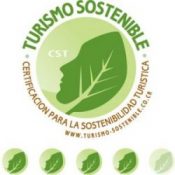The following is a guest post written by Chris and Anja, volunteers with Bahia Aventuras, about their Corcovado National Park Tour. Thanks Chris and Anja for contributing.
As I am really passionate about animals (especially monkeys!) I decided to visit Corcovado National Park, which is famous for its density of species. Some days earlier to my trip I already had joined an amazing snorkeling tour offered by Bahía Aventuras, so I knew where to turn to. And again they didn’t dissapoint me at all!
We drove to Corcovado by boat and went hiking for about 4 hours. Because it was raining the night before, the trail was a little bit muddy (hint: bring your hiking shoes, not your sandals!). Our guide had deep knowledge about both flora and fauna of the jungle and showed us every animal we discovered on a folder with pictures as well. We saw everything from howler monkeys and groups of spider monkeys to snakes, frogs to all kinds of eagels and hummingbirds down to fireflies, leafcutter ants and other things. Pretty much everything you would expect of a jungle. After the hike I was really exhausted, but the included meal at the park was excellent and more than enough for everyone. Unfortunately the weather changed on our way back and we got into a heavy rainstorm, leaving us soaked on the boat (hint #2: bring your raincoat, you never know!).
Nevertheless the whole trip was an experience I wouldn’t want to have missed!




